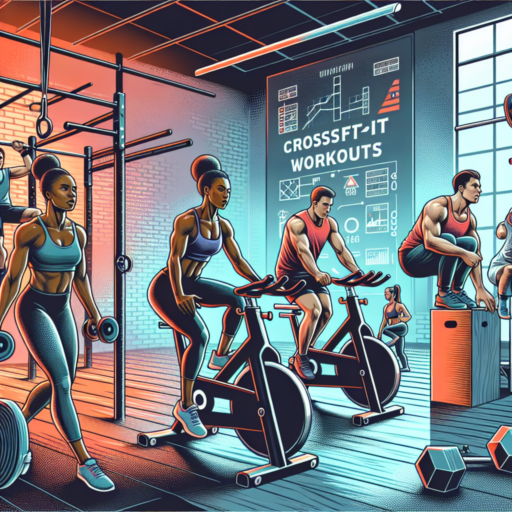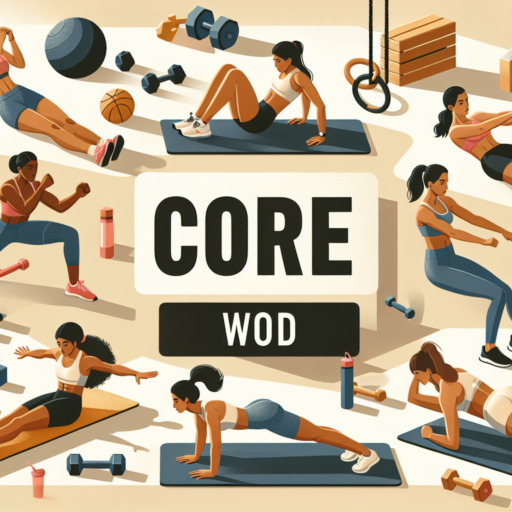How do crossfitters train abs?
CrossFitters approach ab training with a focus on functionality and core strength, which plays a crucial role in virtually every CrossFit workout. Unlike traditional ab routines, CrossFit abs exercises are not just about achieving a visually appealing six-pack. Instead, they prioritize movements that enhance athletic performance and improve overall strength.
Integrated Core Exercises
One of the keystones of CrossFit’s approach to training abs is the integration of core exercises within broader workouts. CrossFitters rarely perform isolated ab exercises. Rather, they engage their core through compound movements that require stability and strength from the abdominal muscles. Exercises such as squats, deadlifts, and Olympic lifts are staples in a CrossFit regimen, demanding and thus strengthening, the core.
High-Intensity Functional Movements
Another signature aspect of CrossFit’s ab training is the incorporation of high-intensity functional movements. These are designed to mimic real-life activities, enhancing the body’s ability to perform both inside and outside the gym. Movements like toes-to-bars, kettlebell swings, and planks are frequently used to build core endurance and strength. The intensity not only challenges the muscles but also boosts metabolic rate, potentially aiding in fat loss around the midsection.
Variety and Scalability
Variety in exercises and the scalability of workouts are fundamental in CrossFit, allowing athletes of all levels to continuously challenge their core. From AMRAPs (As Many Rounds As Possible) to EMOMs (Every Minute On the Minute), the diverse formats keep the abdominal muscles guessing and developing. By adjusting the weight, duration, and intensity, CrossFitters can tailor their ab workouts to meet their unique fitness levels and goals.
Is CrossFit good for Building abs?
When considering various fitness programs for strengthening and defining the abdominal muscles, many people wonder, Is CrossFit effective for building abs? The answer lies in the comprehensive and high-intensity nature of CrossFit workouts. Unlike traditional exercises that might isolate the abs, CrossFit encompasses a wide range of movements that engage the core in a more holistic way.
One of the key aspects of CrossFit is its focus on functional movements. These are exercises that mimic everyday actions, engaging multiple muscle groups at the same time, which includes the abdominal area. Movements such as deadlifts, squats, and overhead presses require strong core engagement. Thus, while CrossFit might not include a lot of typical «ab exercises,» the requirement for core stability and strength in almost every workout indirectly benefits the abdominal muscles.
In addition to the direct impact on core strength, CrossFit’s variability and intensity also contribute to fat loss. A leaner physique makes the underlying ab muscles more visible, contributing to their definition and appearance. The combination of metabolic conditioning, gymnastics, and weightlifting within CrossFit workouts ensures a high level of intensity that can accelerate fat loss, assuming a proper diet is followed. This holistic approach to fitness can be particularly effective for those looking to enhance their physique and build pronounced abs.
How do I strengthen my core for CrossFit?
Strengthening your core is fundamental to excelling in CrossFit, a sport that demands versatility, power, and endurance from its athletes. The core is the powerhouse of the body, it supports every lift, stabilizes your spine during intense workouts, and helps improve your overall athletic performance. The first step to building a stronger core is incorporating targeted exercises into your training regimen.
Engage in Compound Movements
Exercises like squats, deadlifts, and overhead presses are not only foundational to CrossFit but also incredibly effective in engaging and strengthening the core. These compound movements require the activation of multiple muscle groups, with the core working tirelessly to stabilize the body throughout each lift. By intensifying your focus on these multi-joint exercises, you inherently boost core strength.
Incorporate Core-specific Workouts
While compound movements are essential, dedicating time to core-specific exercises can provide the targeted strength needed for high-intensity CrossFit routines. Planks, L-sits, and Russian twists are excellent for building endurance and stability in the core muscles. Implementing a variety of exercises ensures a well-rounded approach, tackling the core from every angle. For instance, alternating between static holds and dynamic movements can challenge your core in unique ways, promoting growth and resilience.
Consistency and progress tracking are key components of any successful training plan. Integrating core workouts two to three times a week, gradually increasing intensity and complexity, will lead to noticeable improvements in your CrossFit performance. Remember, a strong core not only enhances your ability to perform but also reduces the risk of injury, making it an indispensable element of your fitness journey.
No se han encontrado productos.
Why do CrossFit athletes have big abs?
Many often wonder about the prominent abdominal muscles seen on CrossFit athletes, a characteristic that sets them apart in the world of sports. The reason lies deeply within the nature of CrossFit itself, a high-intensity training program that incorporates a wide range of physical activities. These vigorous exercises demand an extraordinary amount of core engagement, which in turn leads to the development of significantly pronounced abs.
The workout structure in CrossFit is another vital component in the development of big abs among athletes. Functional movements, which are a cornerstone of CrossFit routines, mimic real-world activities that require the stabilization and mobilization of the core muscles. Activities such as squats, kettlebell swings, and Olympic weightlifting not only enhance muscular endurance but also focus intensely on the abdominal region, contributing to its growth and definition.
Variability of routines also plays a crucial role. CrossFit’s philosophy of constantly varied workouts means athletes are always challenging their muscles in new and demanding ways. This prevents the plateau effect often seen in traditional workout programs, where muscle growth and development stagnate over time. Instead, CrossFit athletes’ abs continue to grow stronger and more defined as they adapt to the ever-changing physical demands.



